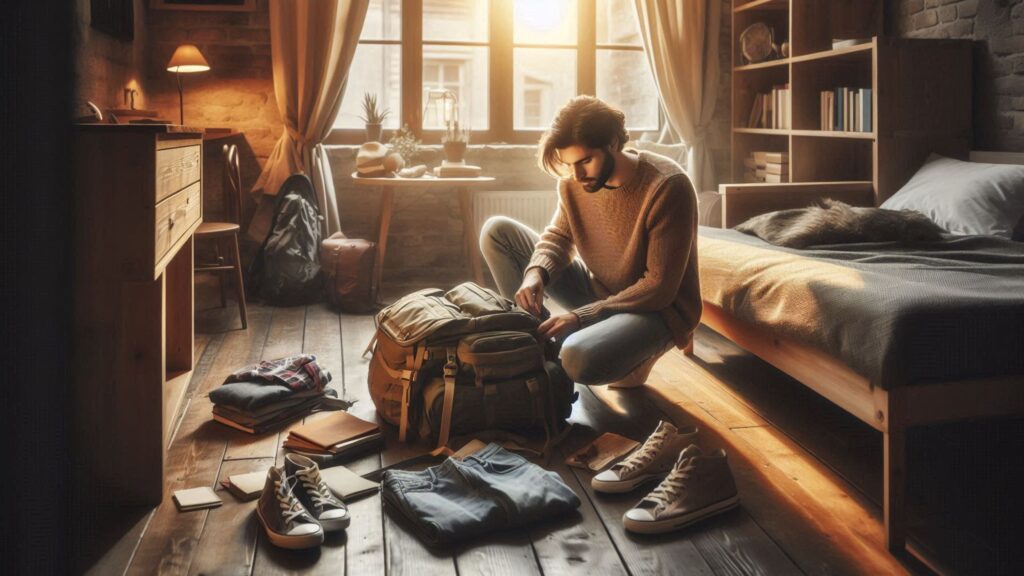Once you learn how to pack light as a long-term traveler, you won’t want to go back to lugging around big suitcases. The benefits are just too good!
When you travel with only carry-on luggage, you don’t have to worry about airlines losing your bags. Budget airlines often charge extra for checked luggage — you skip that completely. Plus, you won’t be sprinting through a packed train station dragging a 25kg suitcase behind you or struggling to fit it onto an overflowing luggage rack. Most hostels don’t even have lockers big enough for huge bags. And honestly, the more stuff you pack, the more likely you are to forget things along the way.
Packing light doesn’t just save your back (and your wallet) — it gives your mind a break too. You realize how little you actually need to be happy and comfortable. Fewer things mean fewer worries about stuff getting stolen or lost. It also helps break those “just in case” habits and the urge to over-consume.
I’ve traveled for months at a time — from Iceland to Thailand — with just a carry-on. There’s tons of advice out there on how to pack light, but here, I’m sharing only the tips that worked for me personally on long-term trips. Whether you’re brand new to this or a travel pro, you’ll find something helpful in this guide.
1. Get a Good Carry-On Bag
Different airlines, trains, and buses all have their own luggage rules. Most let you bring one small bag (like a backpack or purse) and one larger carry-on.
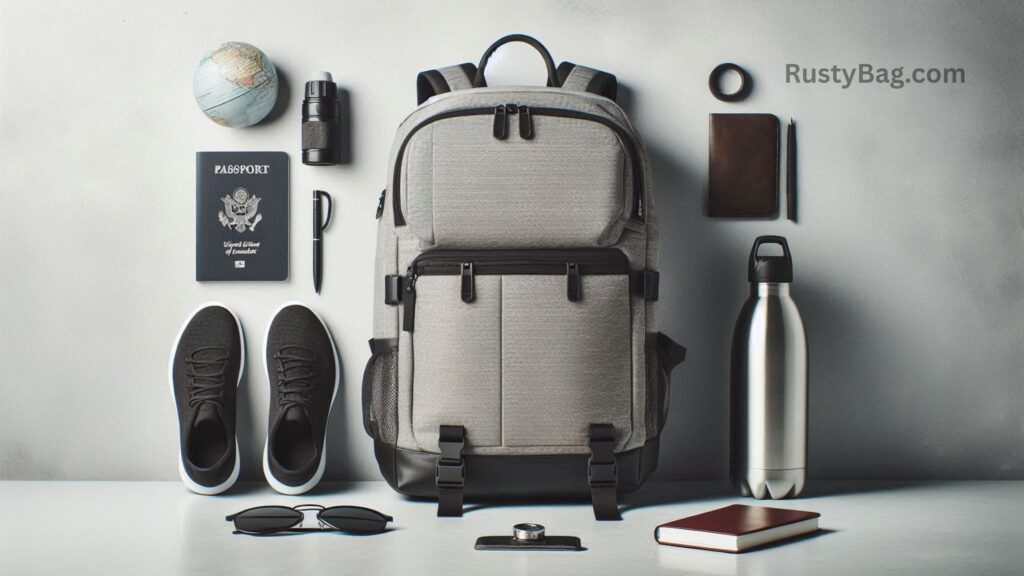
It’s nearly impossible to find a single bag that works for every type of transport, so get a setup that fits your travel style. I mainly travel in Europe, and rolling suitcases over cobblestones and up metro stairs drives me crazy. So, I use an Osprey Fairview 40L as my main carry-on and a Kånken backpack as my personal item. That combo has been my go-to for years.
2. Don’t Pack Last Minute
Packing light takes more planning than you’d think! If you wait until the night before your trip, you’ll probably panic when it all doesn’t fit, and end up ditching things you actually need.
Start packing a few days early. Use a luggage scale to check the weight and test how it feels to carry everything. You’ll also have time to swap out bulky gear if needed.
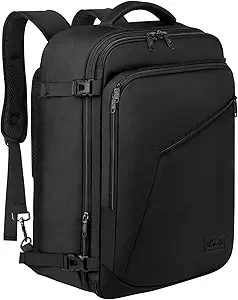
MATEIN Carry on Backpack
It features hideaway padded shoulder straps, allowing conversion from a backpack to a briefcase style, offering flexible carrying options.
Also Read: What are the Best Packing Strategies for Business Travel?
3. Make a Packing List
I don’t write one every time now, but they’re super useful — especially when you’re still figuring things out. Seeing “10 t-shirts” and “4 skirts” on paper helps you realize you’re probably overdoing it.
Lists also help if you ever need to make a travel insurance claim. If your bag gets stolen, you’ll know exactly what was in it.
4. Pack Clothes for One Week
There are lots of “packing rules” floating around like the 1-2-3-4-5-6 rule (1 hat, 2 pairs of shoes, etc.) or the “rule of 3s.” But those don’t really work for long-term travel. I don’t know about you, but doing laundry every four days sounds awful.
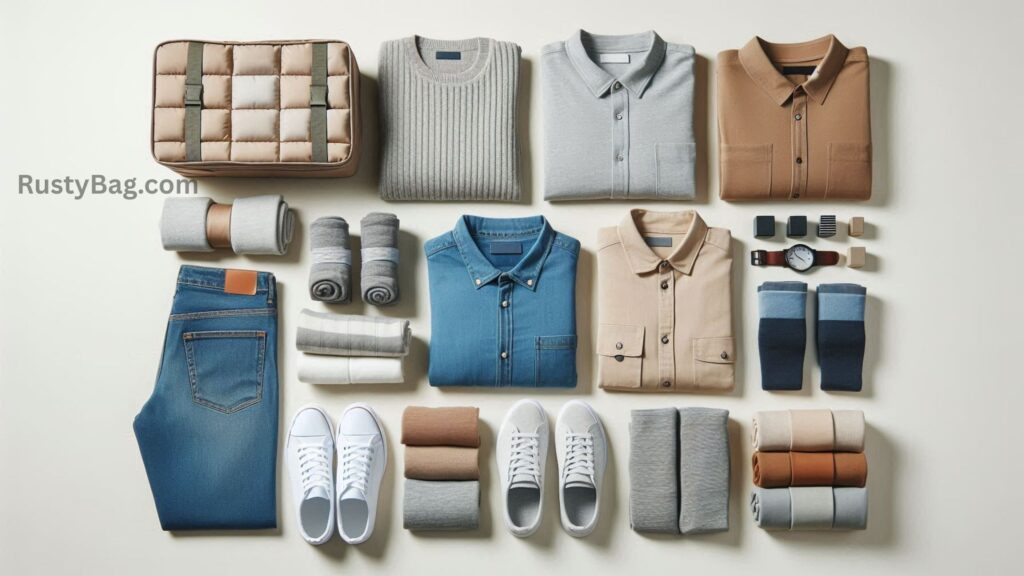
I pack enough clothes for seven days, with one extra outfit just in case. That way I only need to do laundry once a week — even if there’s a long line at the hostel machine.
5. Stick to Mix-and-Match Clothes You Can Layer
You want to be able to pull out the last clean t-shirt and shorts and know they still match. Basics like blue jeans, plain black tops, and white sneakers might seem boring, but they go with everything.
Layering is key too. I wear a corduroy jacket on warm days, and when it gets cold, I throw my packable puffer underneath. I also use leggings under dresses or jeans in colder weather. Versatile pieces like my comfy jumpsuit work for flights, nights out, and chilly evenings with a long-sleeve underneath.
6. Choose Quick-Dry, Easy-to-Wash Clothes
Skip anything that needs dry cleaning or hand-washing — you’ll end up tossing it in a machine anyway and hoping for the best. I’ve ruined enough clothes to learn that lesson.
Also, pack clothes in similar colors so you don’t end up with a grey Mickey Mouse tee that used to be white. Fabrics like nylon and polyester are light and quick-drying. Natural options like bamboo, linen, and Merino wool are great too — comfy, breathable, and ideal for travel.
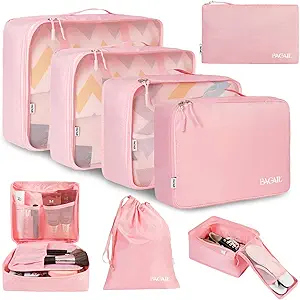
BAGAIL 8 Set Packing Cubes Luggage
Made from premium fabric, they protect clothes from wrinkles and stains, enhancing packing efficiency.
Also Read: What is the Ultimate Packing Guide for a Weekend Trip?
7. Limit Yourself to Four Pairs of Shoes Max
Shoes take up so much space, so less is better. Usually, I bring boots, tennis shoes, and sandals or flip-flops. In warm weather, I sometimes get by with just two pairs.
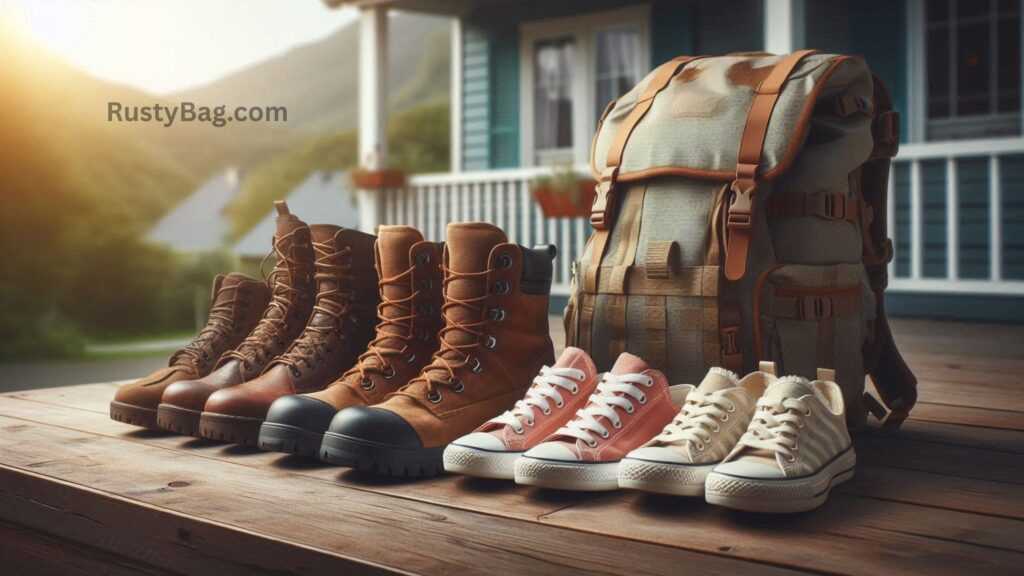
Four pairs only make sense if one of them is tiny (like sliders) or multi-purpose.
8. Use Packing Cubes and Stuff Sacks
These little organizers are game changers. I don’t understand how people travel without them. They help keep your stuff tidy and easy to find.
I use two packing cubes: one for tops, shorts, and pajamas, and another for heavier stuff like jeans and sweaters. Then I use stuff sacks for underwear, socks, and swimwear. A dry bag doubles as my laundry bag or for storing wet clothes.
9. Leave Behind the “Just in Case” Stuff
We all want to pack like Mary Poppins — endless space and options. But in real life, every item should earn its spot in your bag. If I don’t use something at least once on a trip, I reconsider bringing it next time.
10. Pack Hard-to-Find Essentials First
If your bag is overflowing and you think everything is essential, focus on what’s harder to replace. You can buy t-shirts and toothpaste almost anywhere, but medications or plus-size clothing might be tough to find.
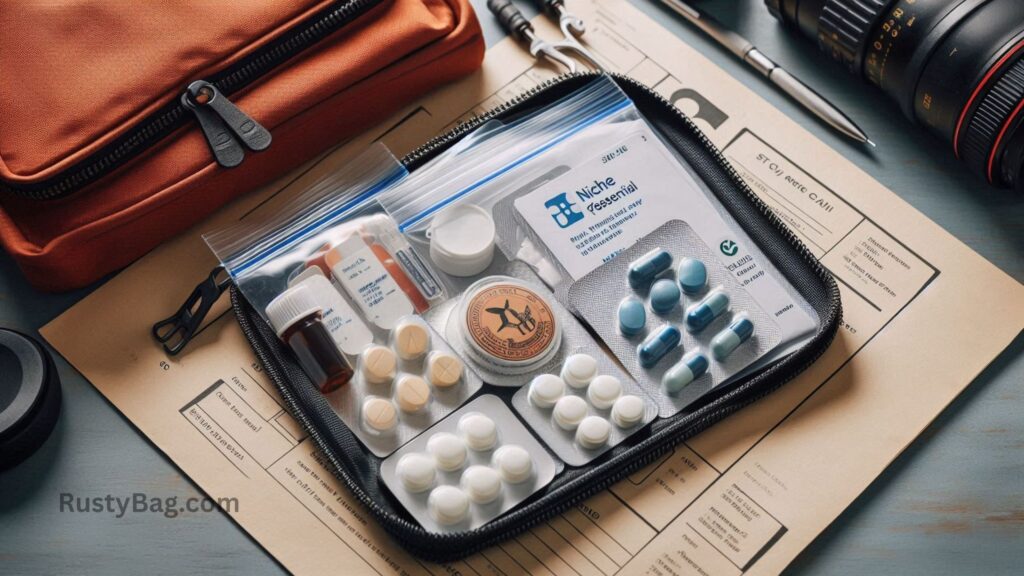
Prioritize those items over things that are easy to pick up on the road.
11. Invest in Quality Gear Where It Matters
Not every item has to be expensive, but a few high-quality pieces go a long way. For example, Merino wool socks are my favorite — warm, breathable, and magically odor-resistant.
I also invested in a GORE-TEX rain jacket and good hiking boots, and I’ve never regretted it.
12. Use Carabiners on Your Backpack
I’m not saying hang your entire closet from your backpack, but a couple of carabiners can help. I use them to clip on a hat or boots when I don’t want to wear them.
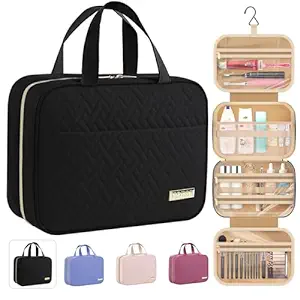
HOTOR Travel Toiletry Bag
This water-resistant toiletry bag features organized layers with multiple compartments and mesh pockets, elegantly organizing all your toiletries and shaving essentials.
Also Read: How do Travel Tech Accessories Enhance the Overall Travel Experience?
13. Mix Solid, Mini, and Full-Size Toiletries
Solid toiletries (like shampoo bars and soap) save space and last longer than you’d think. I bring solid options plus a few small essentials. Dual-use items like Aloe Vera gel work great as shaving cream and after-sun care.
14. Swap to Lightweight Travel Gear
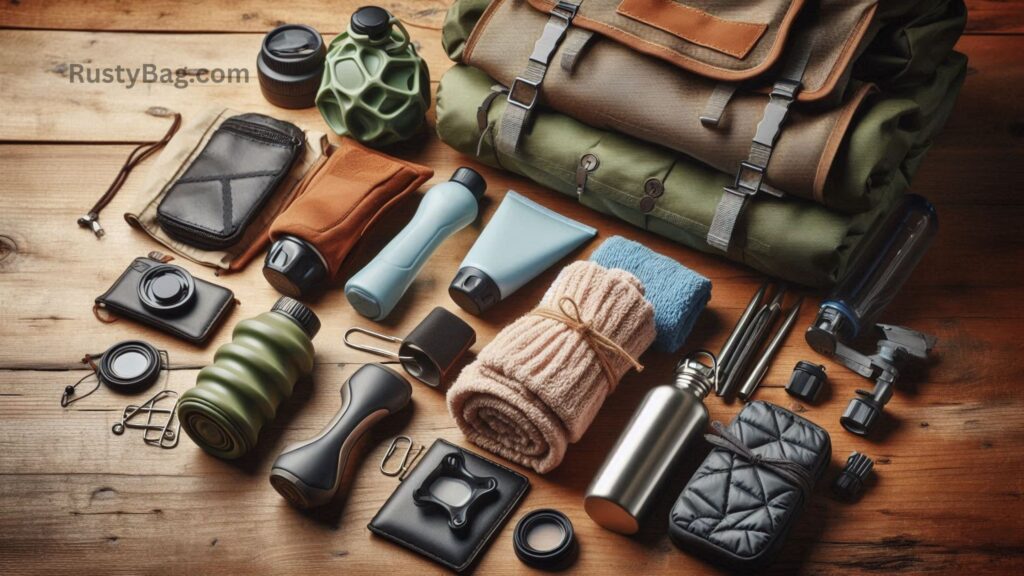
Lightweight versions of everyday items make a big difference. I use a microfiber towel that packs tiny, a small hairbrush, and a travel-size umbrella. They’re not always the same quality as full-sized stuff, but they save weight and space.
15. Don’t Skip Safety Essentials
Don’t ditch safety gear to save space. A filter water bottle might feel bulky, but it’s useful in places like Peru. I also pack sun hats, sunglasses, and way too many padlocks — but they make me feel safer.
16. Bring a Universal Travel Adapter
One of my best investments ever! A good universal adapter fits plugs almost anywhere and usually has USB ports too. It’s the only one I need for all my electronics — I’ve been using the same one for years.
